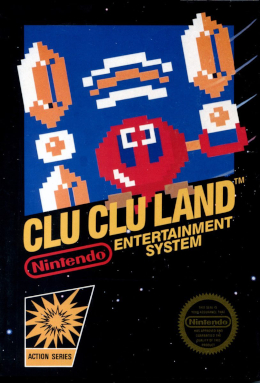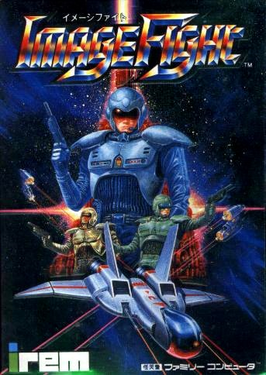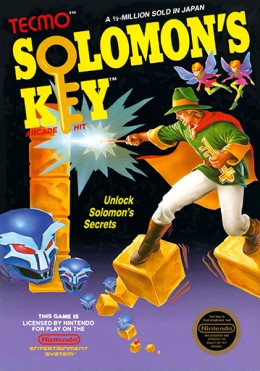
The Game Boy Advance (GBA) is a 32-bit handheld game console developed, manufactured and marketed by Nintendo as the successor to the Game Boy Color. It was released in Japan on March 21, 2001, in North America on June 11, 2001, in the PAL region on June 22, 2001, and in mainland China as iQue Game Boy Advance on June 8, 2004. The GBA is part of the sixth generation of video game consoles. The original model was followed in 2003 by the Game Boy Advance SP, a redesigned model with a frontlit screen and clamshell form factor. A newer revision of the SP with a backlit screen was released in 2005. A miniaturized redesign, the Game Boy Micro, was released in September 2005.

R-Type is a horizontally scrolling shooter arcade video game developed and released by Irem in 1987 and the first game in the R-Type series. The player controls a star ship, the R-9 "Arrowhead", in its efforts to destroy the Bydo, a powerful alien race bent on wiping out all of mankind. The R-9 can acquire a glowing orbicular device called a "Force", protecting it from enemy fire and providing additional firepower. The arcade version was distributed by Nintendo in North America; it is the last arcade title Nintendo distributed.
A game engine is a software framework primarily designed for the development of video games and generally includes relevant libraries and support programs such as a level editor. The "engine" terminology is similar to the term "software engine" used in the software industry.
A game programmer is a software engineer, programmer, or computer scientist who primarily develops codebases for video games or related software, such as game development tools. Game programming has many specialized disciplines, all of which fall under the umbrella term of "game programmer". A game programmer should not be confused with a game designer, who works on game design.

Clu Clu Land is a puzzle video game developed and published by Nintendo in 1984 in Japan for the Famicom. It was released in North America in 1985 as a Nintendo Entertainment System launch game and in Europe in 1987. Nintendo has rereleased it many times via emulation.
Game Pak is the brand name for ROM cartridges designed by Nintendo for some of their earlier video game systems. The "Game Pak" moniker was officially used only in North America, Europe, and Oceania. In Japan, Nintendo uses the term Cassette when referring to Famicom, Super Famicom and Nintendo 64 game paks, and Cartridge for the Game Boy line.

Image Fight is a 1988 vertically scrolling shooter arcade video game developed and published by Irem. It was ported to the Nintendo Entertainment System, PC Engine (Japan-only), Sharp X68000 (Japan-only), and FM Towns (Japan-only) in 1990.

Solomon's Key is a puzzle game developed by Tecmo in 1986 for an arcade release on custom hardware based on the Z80 chipset. It was ported to multiple systems including the Nintendo Entertainment System and Commodore 64. The PC Engine version was known as Zipang and the Game Boy version as Solomon's Club. A prequel, Solomon's Key 2, was released in 1992 for the NES. The game was also ported to Virtual Console for the Nintendo 3DS and Wii U in 2006 and later to Nintendo Switch Online in 2018.
Shin'en Multimedia is a German independent video game developer. Based in Munich, the company was founded in 1999 by former members of the demoscene group Abyss and is an official third-party developer for Nintendo. They develop games primarily for the Nintendo Switch, some non-Nintendo platforms such as the PlayStation 4, and previously for the Wii U, Wii, Nintendo 3DS, Nintendo DS, Game Boy Advance, and Game Boy Color.

The Vicious Engine is a game engine that offers functionality for rendering, sound, networking, physics, game play scripting, and lighting. It was developed by Vicious Cycle Software, and was first released in January 2005. No additional third-party libraries are required, and all source code is included. It supports GameCube, Wii, WiiWare, Xbox, Xbox 360, Xbox Live Arcade, PlayStation 2, PlayStation Portable, PlayStation Network, and Microsoft Windows. The engine would become dormant as a part of the closure of Vicious Cycle Software in 2016.
indieszero Corporation, Ltd. is a small video game development company headquartered in Musashino, Tokyo, Japan. It was founded on April 21, 1997, and has developed video games for other video game companies, including Nintendo, SEGA, and Square Enix.
Nintendo System Development Division, commonly abbreviated as Nintendo SDD and formerly known as Nintendo Network Business & Development (NBD), Nintendo Network Service Development (NSD), and Nintendo Special Planning & Development (SPD), was a Japanese division located in the Nintendo Research Institute in Kyoto, Japan, until it moved to the Nintendo Development Center, also in Kyoto. The division consisted of a single development team that focused on software and peripheral development. SDD was composed of two development departments with different duties: the Network Development & Operations Department, which handled Nintendo Network service programming, in cooperation with Nintendo Network Service Database, and the Environment Development Department, which developed Software Development Kits (SDKs), among other technologies.
Cocos2d is an open-source game development framework for creating 2D games and other graphical software for iOS, Android, Windows, macOS, Linux, HarmonyOS, OpenHarmony and web platforms. It is written in C++ and provides bindings for various programming languages, including C++, C#, Lua, and JavaScript. The framework offers a wide range of features, including physics, particle systems, skeletal animations, tile maps, and others.

Yakuman (役満) is a 1989 mahjong video game developed by Intelligent Systems and published by Nintendo for its handheld Game Boy as one of the Japanese launch titles. It is the first entry in a series of first-party Japanese mahjong games on Nintendo systems, with sequels on the Famicom, Game Boy Advance, DS, Wii, Wii U, and 3DS.
Middleware is a type of computer software programme that provides services to software applications beyond those available from the operating system. It can be described as "software glue".

Nintendo Platform Technology Development, commonly abbreviated as Nintendo PTD, is a Japanese hardware development division for Nintendo. The division was created in September 2015 after the merger of Nintendo's Integrated Research & Development and System Development divisions.








